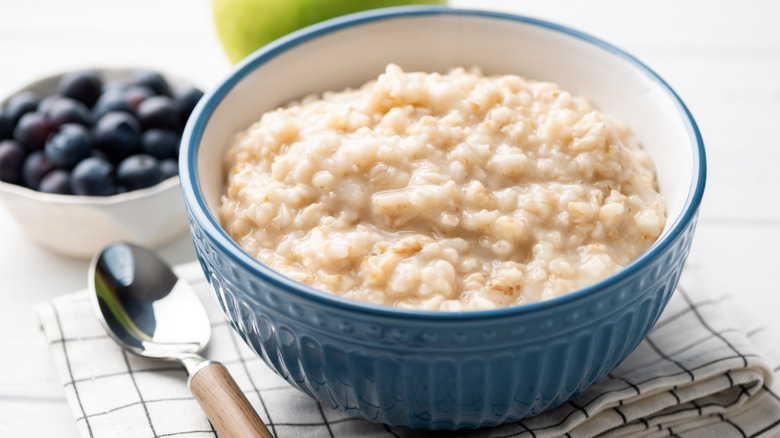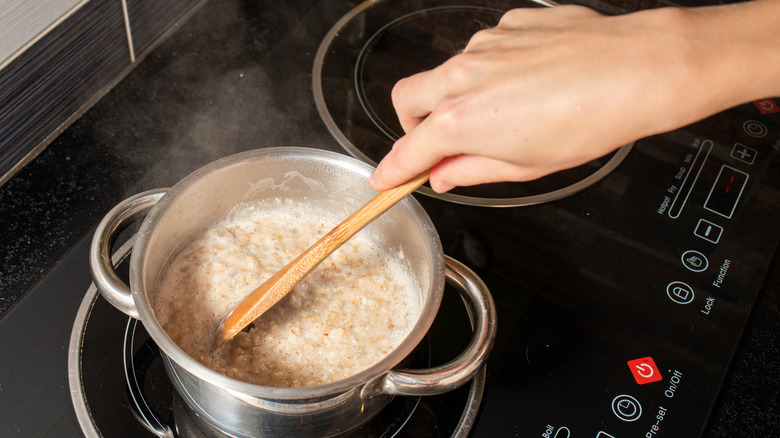The Real Reason Your Oatmeal Turned Out Chewy
Who doesn't love oatmeal? This hearty, gluten-free grain packed with vitamins, minerals, and antioxidants has been proven to help lower cholesterol, promote a healthy gut, and help a person feel fuller longer, according to Healthline. That last point is likely one of the many factors that encourages people to consistently choose oatmeal for breakfast, with the warming grain one of the most perennially popular choices in the United States: According to Make Food Safe, more than 40 million bushels of oats are grown in the U.S. for human consumption each year.
Fortunately for those of us that love oatmeal, the dish pretty much couldn't be simpler to make at home — even in non-instant versions such as rolled oats or steel cut oats. Cooking these different preparations of oats is typically just a matter of cooking them in the microwave, on the stovetop, or even in the slow cooker with a certain proportion of water. But oats aren't immune to human error, either, and if you've found that your oatmeal consistently turns out too chewy, your oat-cooking technique could be to blame.
Stirring oats too much can cause them to get chewy
If you're one of those old-fashioned folks who still makes your oatmeal on the stovetop — as opposed to in the microwave — then you might think the method is foolproof: Boil the water in a pan, tip in the measured oats, and stir for a few minutes until the grains have absorbed the water and cooked through (via Quaker Oats). But watch out. You don't want to be stirring your pot of oats the whole time it's on the stove, or you could risk your breakfast bowl of oatmeal turning out way too chewy.
According to Kitchn, continually stirring your oats while they're cooking might seem like a good idea, but it isn't necessary. It could contribute to gluey and chewy oats instead of the smooth and creamy dish you intended to make. The outlet explains that moving the oats around releases more starch from the grains, which can cause excess stickiness. For creamy oats, try to stir the oats only once or twice while they're cooking — a technique that Quaker Oats actually specifies in its cooking instructions. You'll be rewarded with silky, creamy oats ready for topping with maple syrup, dried fruit, or even tiger nuts, if you really want to get fancy.

